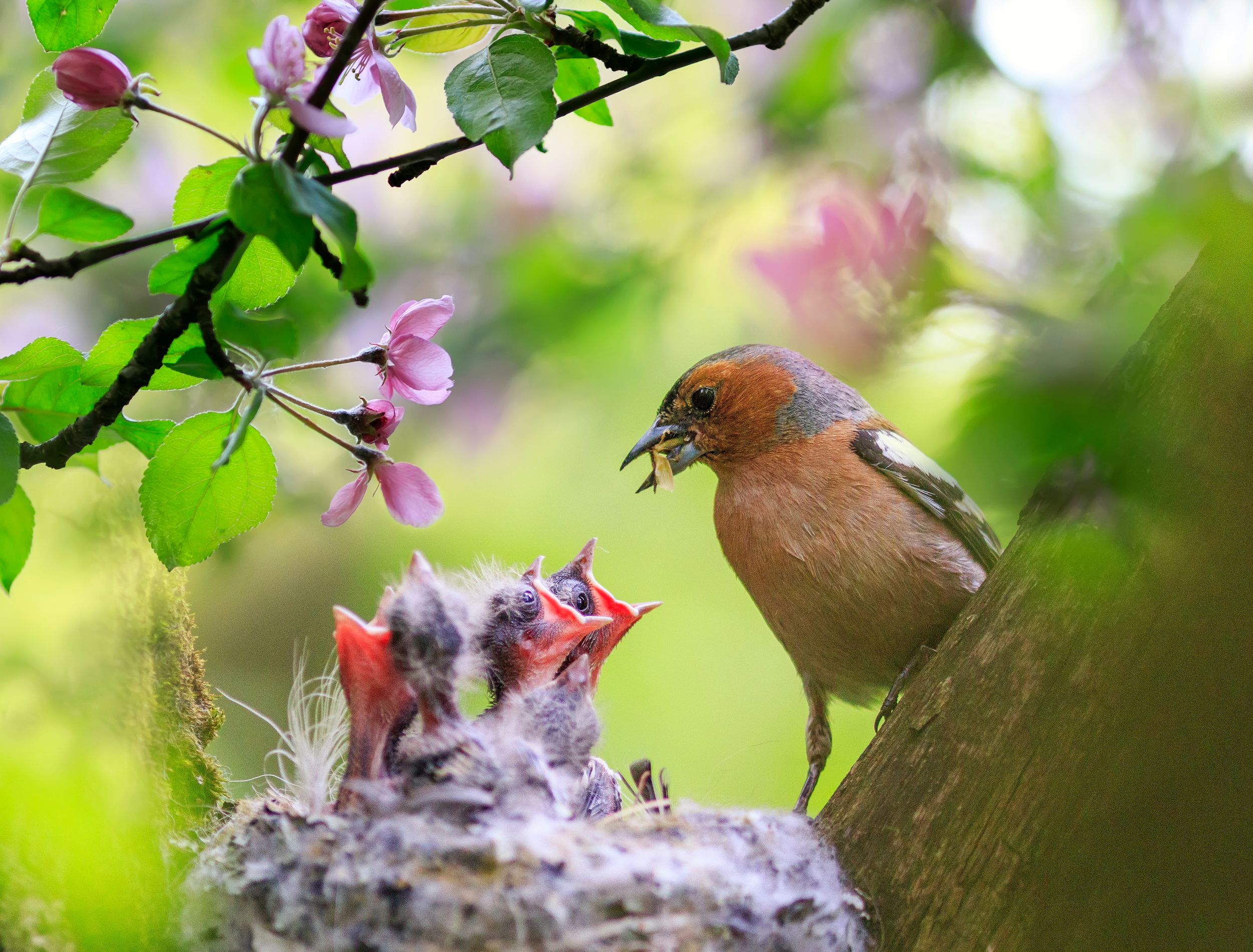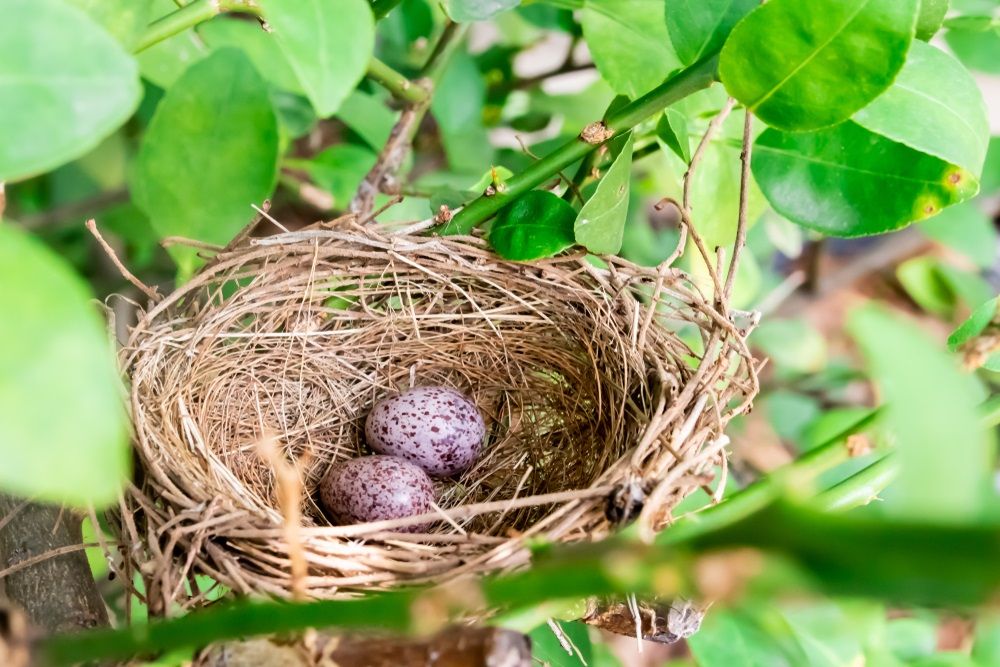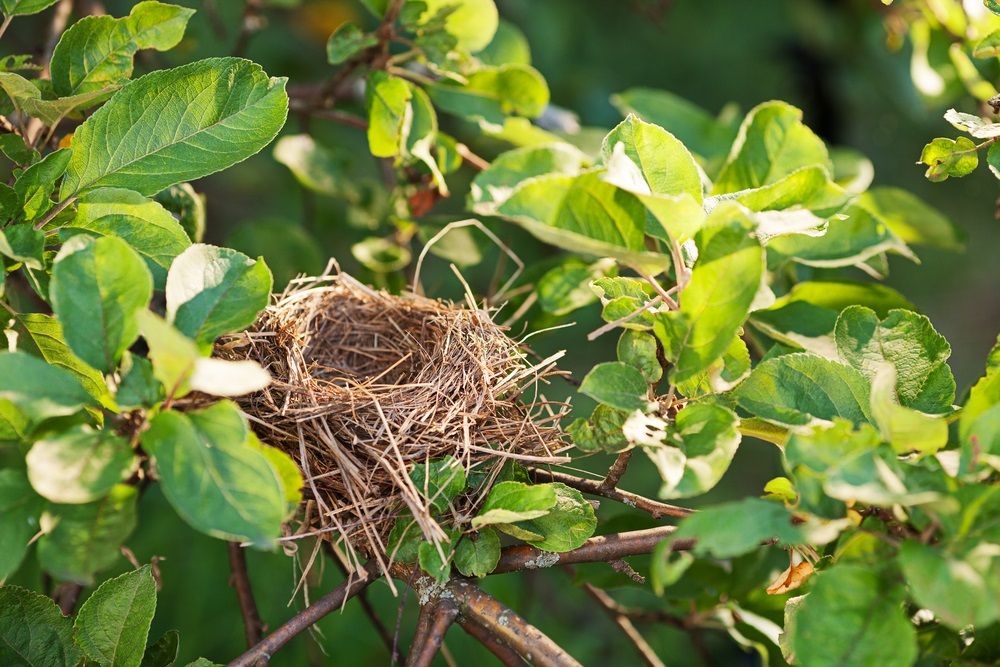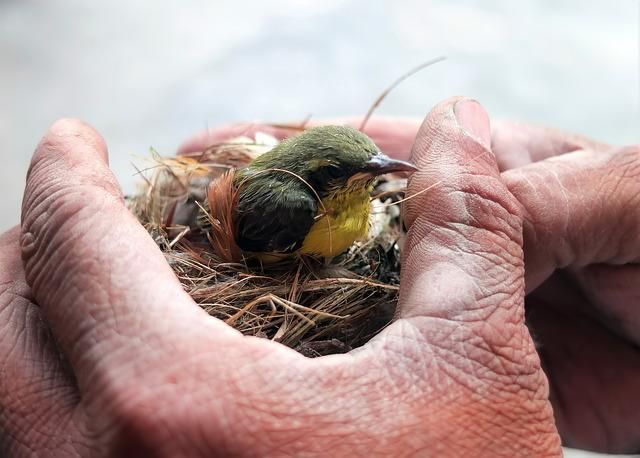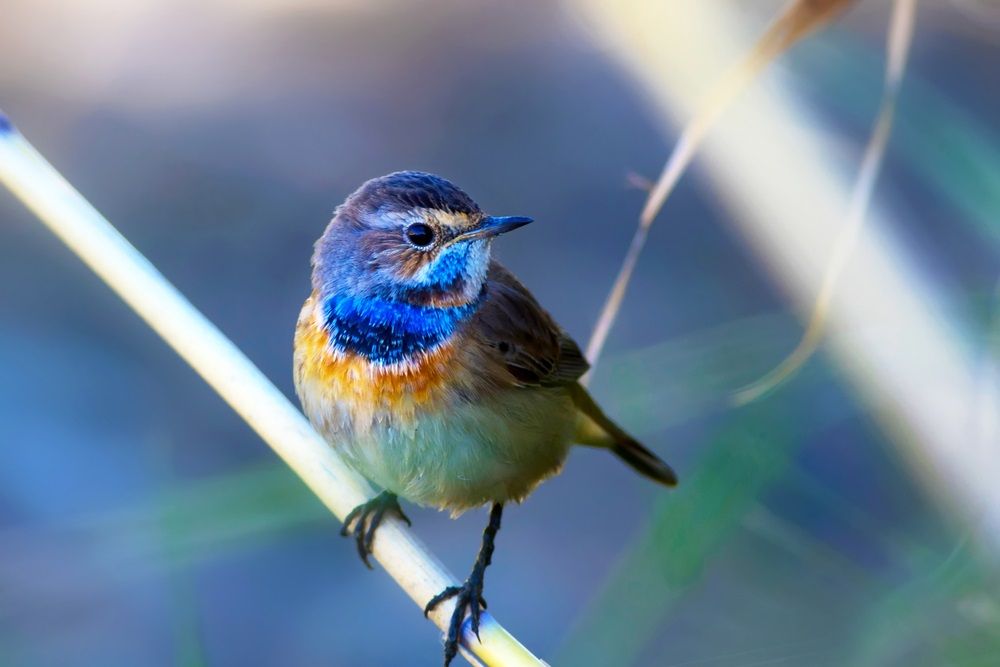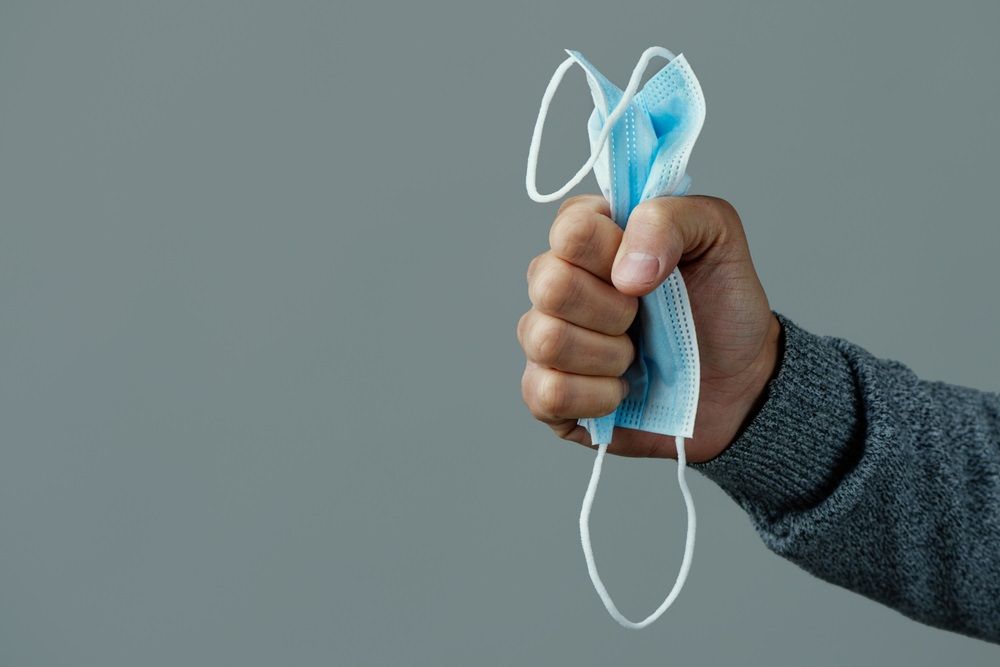Most home gardeners are used to the presence of birds in their backyard space. Both beautiful and helpful, birds serve an important role in your backyard ecosystem. They are enchanting to watch as they go about pollinating flowering plants and spreading seeds. Unfortunately, the places birds choose to nest are not always ideal.
While prevention is key, there are certain times when removing a bird nest may benefit both you and the birds. Learn when it is appropriate to remove a nest and how to safely go about it!
Materials Needed
- Protective gloves (latex)
- Long sleeves/pants
- Anti-bacterial spray
- Sealable bag or container
- Bleach and water solution
- Respiratory mask
When to Remove a Nest
Image credit: Coyoteblabla via Shutterstock
In an Unsuitable Location
It can be truly perplexing to see where a bird has decided to build a nest and care for its young! From doorways to drainpipes, some locations just don't make suitable nest locations.
Nests should be removed when the location poses a risk to the birds or their babies. Such locations include high-activity areas that see a lot of human traffic, as well as places where the nest may fall or become damaged. Remove or relocate bird nests found in doorways, active chimneys, and yard equipment.
A bird's nest built in a location that is a hazard or health risk to you and your family should also be removed. It is not uncommon to see a bird utilize an open dryer, fan or stove vent for a nesting spot. This creates a fire hazard as well as exposes your home to the pests and parasites residing in the nest.
A nest location is unsuitable when it causes damage to your home or property. Common examples are gutters and downspouts which are rendered useless when they are clogged by a nest. These nests should be removed to protect the birds and prevent water damage to your home.
When it is Unfit for Use
If you notice a nest is falling apart and is unsafe for future use, it's a good idea to remove it. Whether the location was poor or it was destroyed by the weather, a dilapidated nest poses a huge risk for bird eggs and baby chicks. It is best to remove a broken nest and discourage other birds from building in the same location.
When it is Empty
Image credit: Mike Laptev via Shutterstock
The only bird nest suitable for removal is a vacant one. Depending on the type of bird, a nest may be used once or repeatedly. Ensure the nest has been abandoned at the end of the season before considering removal.
The only time a nest should be removed before the end of nesting season is if it is in an unsafe location where the birds may be stressed or injured. In this case, it is extremely important to consult a wildlife official. They may be able to look after any eggs or chicks until they are mature enough to leave the nest. Do not try to move the nest yourself in this situation.
When You Should Not Remove a Nest
Image Credits: vinsky2002 via Pixabay
When in-Use
It is not responsible or safe to remove an inhabited nest where there are birds or eggs present. Unless there is a risk to the birds or their offspring, leave them be until the end of nesting season. Keep in mind that several large bird species return to the same nests year after year.
Those of Endangered/Threatened Species
Image credit: mutan via Shutterstock
Many species of bird and their eggs are protected by local, regional or national wildlife laws. These laws make it illegal to remove the nests of certain bird types. Consult a wildlife official before removing, altering or interfering with any nest in your space.
When Removal is Risky
Do not remove a bird nest that is not easily accessible. If you are reaching for one up high, use a ladder and invite someone to spot you. Only try to remove a nest if you have complete control over the operation.
Do not attempt to remove a nest guarded by aggressive adult birds. Territorial birds do not take kindly to an invader trying to remove their home. Consult a wildlife official for assistance when there is a concern of defensive adult birds.
How to Safely Remove a Nest
Image credit: Mike Laptev via Shutterstock
Step One: Identify the Bird Species
The type of bird you are dealing with determines the legality of its nest removal as well as the appropriate time to remove it. Refer to your local, regional and national wildlife laws in order to avoid the penalties and hefty fines of tampering with a protected species.
The species of bird also gives you crucial information on its nesting habits. Certain birds may use a nest only once per nesting season while others return four or five times. If you are unsure of the species of bird you're dealing with, consult a wildlife official in your area before attempting removal.
Step Two: Ensure the Nest is Inactive
Image credit: Chawalit Pimchan via Shutterstock
The ideal time for nest removal is during the building stage. If you do not catch a bird in the act of creating an unwanted nest, the next best time for its removal is after nesting season. Inspect the nest throughout the season and ensure there are no birds, chicks or eggs inside prior to removal.
Step Three: Protect Against Contamination
Image credit: nito via Shutterstock
Once you are positive your nest is empty and legal to move, the next step is to prepare yourself for the removal process. As bird nests contain hidden pests and parasites, it is important to protect yourself from exposure. Wear latex gloves and cover yourself with long sleeves and pants. It is also recommended to wear a respiratory mask to prevent breathing in anything harmful.
Step Four: Sanitize and Safely Remove
Use an over-the-counter anti-bacterial solution to spray the entire bird nest down. Allow it to fully dry before removing it carefully from the undesired location.
Step Five: Properly Dispose of Nest
Dispose of the nest in a sealable bag or container and keep it away from your house. This dissuades predators from nosing around nesting sites while preventing the spread of pests and parasites.
Step Six: Sanitize Site
The next step is to properly sanitize the location from which you removed your nest. This rids the area of any left-over nesting materials and particles of fecal matter.
Cleanse all artificial surfaces around the nest site with a solution of one part chlorine bleach and nine parts water. Proper sanitization prevents ailments such as histoplasmosis; an infection caused by breathing in spores from a fungus that grows on bird feces.
Step Seven: Clean Yourself up
Immediately dispose of your gloves and put your clothes through a hot wash. Wash your hands thoroughly with an antibacterial soap and admire your nest-free space!
Step Eight: Deter Future Nest Building
Prevention is key. It is easier to deter birds from building a nest than it is to properly remove them after the fact. Use slanted boards or bird spikes to change the shape of a surface in an unsafe or unsuitable location.
Keeping up to date on home repairs also makes a big difference! Repair holes and fix any open vents that may be attractive to nesting birds.
Statues of owls, cats, or snakes placed in undesirable locations help deter birds from settling.
Try to place your bird feeders or baths farther from your home if you're having problems with nesting birds.
Step Nine: When in Doubt, Ask For Help!
The most important thing to keep in mind with bird nest removal is safety. This includes your safety as well as the birds!
Get in touch with a wildlife specialist for any concerns you may have over the unwanted nest in your backyard space. Wildlife sanctuaries, bird rescues, and wildlife exclusion companies are all great resources for bird nest info!
To Sum It Up
When birds nest in unsafe or unsuitable locations, nest removal can be the best course of action.
Ensure you abide by wildlife laws that protect certain bird species and their nests. When it is appropriate, safely remove an inactive nest at the end of nesting season. Use the proper safety precautions and sanitize the nest site thoroughly after removal.
Enjoy your birds at a comfortable distance and deter them from building in unsafe or unsuitable locations!

